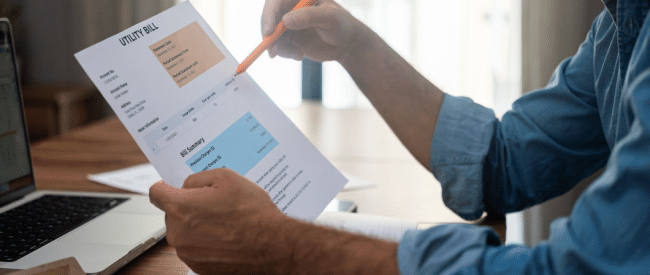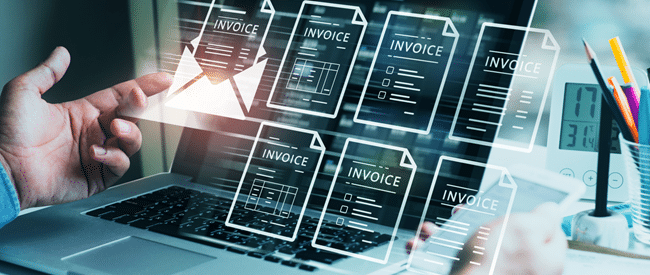Electronic bill presentment and payment (EBPP) is moving beyond online bill pay to a connected, omnichannel experience that blends messaging, billing, and payments in real time. In 2026, the leaders won’t just process transactions, they’ll orchestrate the entire journey from statement to settlement, with an emphasis on making things fast and frictionless for consumers. Five trends are shaping how organizations should prioritize EBPP improvements in the coming year.
1. Mobile-native bill presentment and payment becomes the default.
Consumers have voted with their thumbs. Nearly two-thirds used a mobile device to pay at least one bill in the last year, and mobile’s share of all payments rose to 32% according to the Atlanta Fed. Paper continues its gradual retreat as just 17% of consumers made payments by check, as stated in ACI Speedpay Pulse.
Catch the trend: Prioritize EBPP software that renders statements well on phones, supports one-tap pay paths from email and SMS/MMS, and offers mobile wallets alongside credit and debit cards and ACH while still accommodating print and mail for those who need it.
2. “On time” increasingly means “real time.”
Faster and instant payments are now mainstream preferences and behaviors. The Federal Reserve’s Consumer Payments Study (2025) found that 78% of consumers say faster payments are a preferred option while 3 in 10 made an urgent or same-day bill payment in the past year. Same day ACH, a key faster rail for urgent bill pay, surged last year, up 45% year-over-year, per Nacha.
Catch the trend: Treat real-time posting, immediate confirmations and instant account updates as table stakes for EBPP solutions. Look for integrations with instant rails and same-day options so a consumer’s “I paid it” translates to “your organization received and posted it” within seconds. This reduces late fees and exceptions and accelerates cash flow.
Want a deeper look at how integrated payments and communications improve customer satisfaction? Download our white paper to see the how it can deliver a better experience that drives repeat business and referrals.
3. Digital wallets and flexible choice drive satisfaction and collections.
Preference for digital payment channels keeps rising as more than three-quarters of Americans now prefer to pay bills digitally, a shift propelled by biller and bank mobile apps and digital wallets such as Apple Pay and Google Pay, according to ACI Worldwide. More than half of smartphone users make payments with mobile wallets, one-third of whom use mobile wallets for payments multiple times per week.
Catch the trend: If your EBPP software forces a single path, you’ll slow down self-service and increase delinquencies. Offer the mix customers expect—mobile wallets, cards, ACH, guest checkout, pay-by-text links, portal login, and autopay—and make the fastest options obvious at every touchpoint.
4. Intelligent reminders and autopay replace manual collections.
Payment behavior is increasingly shaped by proactive outreach. Nearly 4 in 5 consumers (79%) receive digital bill alerts or reminders, and two-thirds of those recipients appreciate them (ACI Speedpay Pulse). Meanwhile, automatic payments are consumers’ most trusted payment method, far outpacing in-person payments and physical mail.
Catch the trend: Design communications and payments as a single workflow rather than separate systems. Use an omnichannel customer communications management platform with built-in digital delivery, print and mail, and secure payment capabilities to create statements, segment audiences, trigger compliant reminders across email/SMS/print. Embed “pay now” calls to action.
5. Verticals to watch where EBPP adoption is hottest (and what’s next).
EBPP is already mainstream in utilities, with consumers overwhelmingly paying these bills online. Healthcare is primed to catch up. InstaMed reported more than 50% of consumers would switch providers, or already have for a better healthcare payments experience, creating a compelling case for modern EBPP software to lift digital collection rates.
In auto finance, rising delinquency pressure is pushing borrowers to pay closer to the due date, underscoring the need for timely digital reminders and fast, mobile-friendly options. Overall, 1 in 5 consumers now pays auto loans with a mobile wallet.
In mortgage servicing, escrow costs are increasing for a majority of consumers due to higher property taxes and homeowner’s insurance premiums. To facilitate payment, servicers should step up proactive communications and showcase digital tools such as EBPP that reduce login friction and support- easy and fast payments.
For HOA/community associations, the addressable market is large and growing. HOA/condo fees are recurring bills that are ideal for EBPP with autopay and pay-by-text.
In vacation ownership, ARDA says 30% of resorts report offering a mobile app; among those, 57% include mobile payment for maintenance fees. Average billed maintenance fees increased 17% in 2024 to $1,480, an industry high, making streamlined eBills and mobile payment options a logical upgrade for on-time payment.
Catch the trend: Across all bills, electronic channels dominate and with nearly one-third of bills paid via mobile device, consumer habits will keep pushing EBPP adoption across verticals.
Companies should explore an omnichannel CCM approach that unifies communications and payments so they can design, deliver, and get paid faster across every channel, with experiences customers prefer.
Ready to modernize your bill presentment and payment? Let’s talk about how Expresso® can streamline EBPP for your organization.
Key takeaways:
- The leading EBPP solutions have moved from a set of features to an integrated experience.
- Payment solutions must be mobile-first and channel-agnostic for bill presentment and payment.
- EBPP software that meets customer expectations include customer choice in payment methods, payment options presented in emails, SMS, and portals and real-time or same-day rails with instant confirmations and status updates.
- Companies should unify communications and payments so reminders, statements, and payments live in one workflow, reducing call volume and days sales outstanding.







